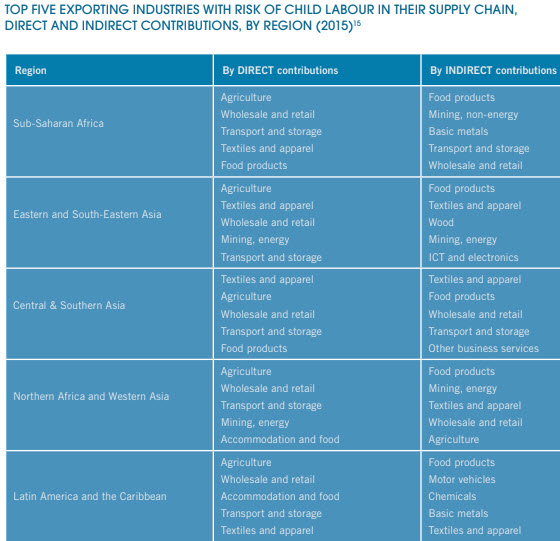Asia Tops Child Labor and Human Trafficking Activity
A new report indicates that a significant share of child labor and human trafficking in global supply chains occurs in activities such as raw material extraction and agriculture, with South-East Asia having the highest percentage of child labor.
The report, Ending child labour, forced labour and human trafficking in global supply chains, provides the first ever estimates of child labor and human trafficking in global supply chains. According to the latest global estimates, there are 152 million children in child labor and 25 million children and adults in forced labour in the world today.
Child labor is any work that deprives children of their childhood, their potential and dignity, and that is harmful to physical and mental development.
The percentage of child labor in global supply chains varies across regions:
• 26 percent in Eastern and South-Eastern Asia.
• 22 percent in Latin America and the Caribbean.
• 12 percent in Central and Southern Asia.
• 12 percent in sub-Saharan Africa.
• nine percent in northern Africa and Western Asia.

The report underscores the critical role of states in addressing gaps in statutory legislation, enforcement, and access to justice (which create space for non-compliance) and in establishing a framework for responsible business conduct. It also examines how governments can lead by example by integrating due diligence considerations into their own activities as procurers of goods and services, owners of enterprises and providers of credit and loans. For business, the report underscores the need for a comprehensive, whole-of-supply-chain approach to due diligence.
The report also outlines a broader preventive approach focused on root causes, including child and family deprivation. “Child labor can have lifelong negative consequences on children’s physical, mental and social development, robbing them of a chance to play and learn,” said UNICEF Executive Director Henrietta Fore. “We need to address the root causes that push children to work, like poverty and violence. We also need concrete solutions to ensure that families have alternative income sources and children have access to quality education and protective services.”
The report was compiled in response to a call by the Group of Twenty (G20) Labour and Employment Ministers to assess violations of core labor rights in global supply chains. The report was produced by the International Labour Organization (ILO), Organization for Economic Cooperation and Development (OECD) , International Organization for Migration (IOM) and the United Nations Children’s Fund (UNICEF) .
Target 8.7 of the Sustainable Development Goals (SDGs) calls on governments around the world to end child labor by 2025 and to put in place effective measures to end forced labor, modern slavery and human trafficking by 2030.
The report is available here.
